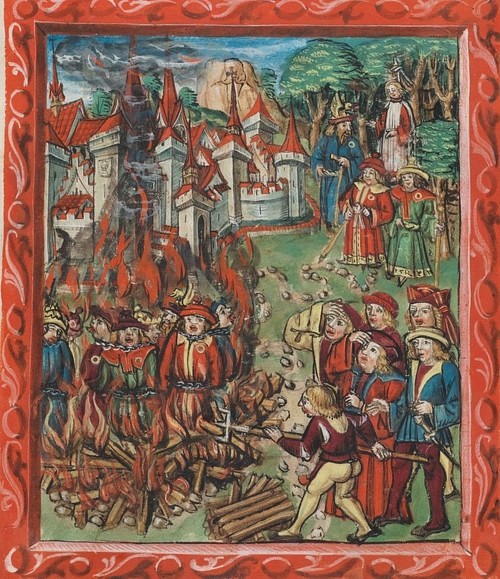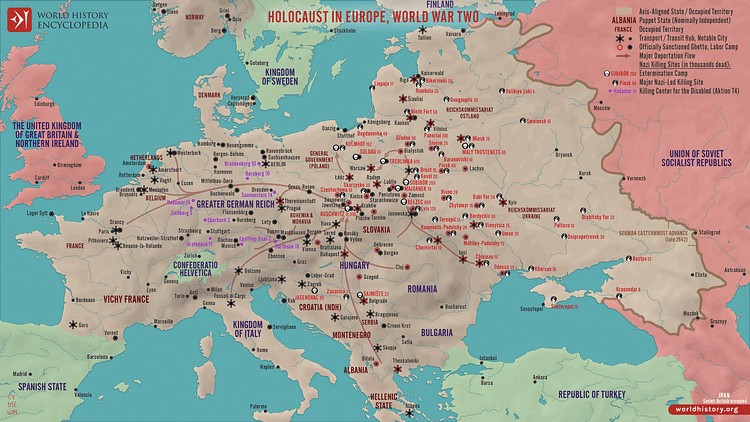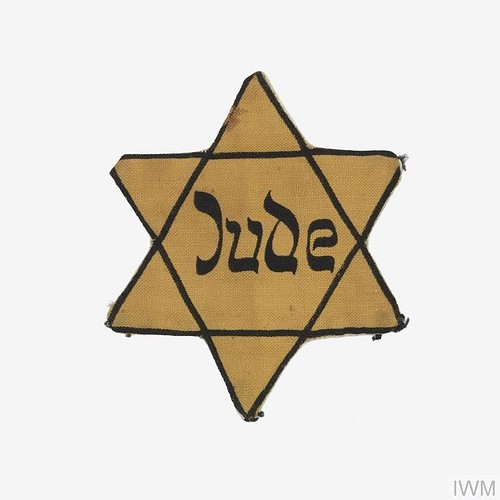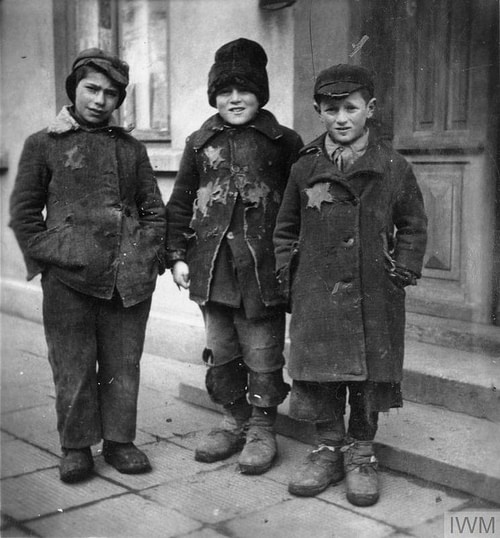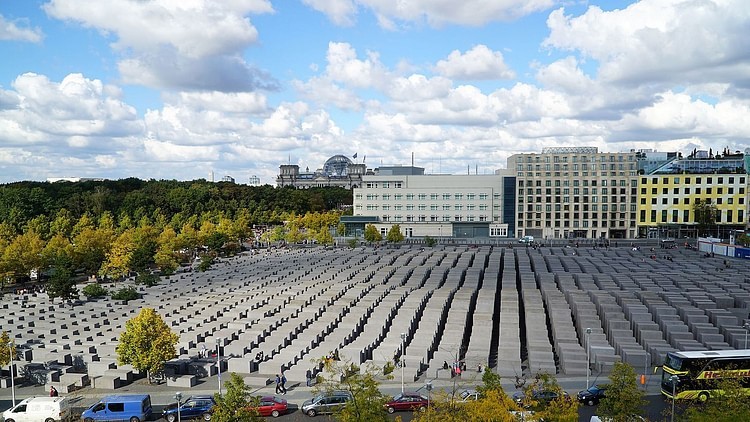Why Did Hitler Hate Jews So Much? This question delves into the complex and disturbing history of antisemitism, Nazi ideology, and the horrors of the Holocaust. At WHY.EDU.VN, we provide a comprehensive explanation of the historical context, Hitler’s personal beliefs, and the Nazi regime’s systematic persecution of Jewish people. Discover insights into historical prejudice, racial theories, and the devastating consequences of hatred, exploring the complex web of factors that fueled Hitler’s animosity and the catastrophic consequences of his actions, including racial discrimination, prejudice, and genocide.
Table of Contents
1. Understanding Hitler’s Antisemitism: A Multifaceted Perspective
2. The Roots of Anti-Semitism: Historical Context
3. Hitler’s Personal Anti-Semitism: Beliefs and Influences
4. Nazi Ideology and Racial Theory: Justifying Hatred
5. The Economic and Political Context: Scapegoating the Jews
6. The “Final Solution”: The Holocaust and Genocide
7. Propaganda and Indoctrination: Fueling Anti-Jewish Sentiment
8. The Impact of World War I: Resentment and Blame
9. Social Darwinism: Justification for Racial Hierarchy
10. The Role of Religion: Historical Christian Anti-Semitism
11. Jewish Success and Resentment: Economic Factors
12. Conspiracy Theories: The Protocols of the Elders of Zion
13. The Nuremberg Laws: Institutionalizing Discrimination
14. Kristallnacht: The Night of Broken Glass
15. Ghettos and Concentration Camps: Steps to Extermination
16. The Role of Enablers: Collaboration and Complicity
17. The Aftermath of the Holocaust: Remembrance and Justice
18. Modern Anti-Semitism: A Continuing Threat
19. The Importance of Education: Combating Hate and Prejudice
20. Why.Edu.Vn: Your Source for Answers and Understanding
FAQ: Understanding Hitler’s Hatred of Jews
1. Understanding Hitler’s Antisemitism: A Multifaceted Perspective
Adolf Hitler’s virulent hatred of Jewish people was a driving force behind the Holocaust and one of the most horrific events in human history. Understanding why Hitler harbored such intense animosity requires examining a complex interplay of historical, political, social, and personal factors. It wasn’t simply one thing, but rather a combination of deep-seated prejudices and calculated manipulation that led to his genocidal agenda. The Nazi leader’s motivations were multifaceted, rooted in centuries of anti-Jewish sentiment, his own personal experiences, and a carefully constructed ideology that scapegoated Jews for Germany’s problems. Hitler presented Jewish people as enemies of the state and a threat to the so-called Aryan race. To fully grasp the depths of this hatred, we need to explore each of these elements in detail.
2. The Roots of Anti-Semitism: Historical Context
Anti-Semitism, or prejudice against Jews, has a long and tragic history predating Hitler by centuries. It has manifested in various forms, including religious discrimination, economic scapegoating, and social exclusion. Throughout the Middle Ages, Jewish people were often ostracized and blamed for societal problems. In some European nations, Jews were restricted from owning land or entering certain professions, forcing many into moneylending, which further fueled resentment. Religious persecution was also common, with Jews being accused of deicide (killing Jesus Christ), a false charge that stoked anti-Jewish violence and discrimination for centuries. Understanding this historical context is crucial for understanding the environment in which Hitler’s anti-Semitism thrived.
3. Hitler’s Personal Anti-Semitism: Beliefs and Influences
While historical anti-Semitism provided fertile ground for hatred, Hitler’s personal beliefs amplified and radicalized these prejudices. Accounts from his early life suggest that his anti-Semitism developed gradually. His time in Vienna, Austria, a city with a significant Jewish population and simmering anti-Jewish sentiment, appears to have been a formative period. Hitler claimed that he initially encountered Jews mainly through their involvement in media and politics. He later expressed resentment towards Jewish people, which he viewed as corrupting German culture and values.
According to August Kubizek, a childhood friend, Hitler’s animosity toward perceived threats to Germans centered largely on Jewish people, who held prominent roles in Vienna.
A letter that Hitler composed to a friend in 1919 contained the following:
The facts are these: First, Jewry is absolutely a race and not a religious association…Their dance around the golden calf is becoming a merciless struggle for all those possessions we prize most highly on earth…In his [the Jew’s] effects and consequences he is like a racial tuberculosis of the nations.
These personal convictions, combined with broader societal prejudices, shaped his worldview and fueled his determination to eradicate Jews from Germany and eventually Europe.
4. Nazi Ideology and Racial Theory: Justifying Hatred
The Nazi Party developed a pseudoscientific racial theory that divided humanity into distinct races, with the “Aryan race” (primarily of Northern European descent) at the top and Jewish people at the bottom. They falsely claimed that Aryans were superior in intellect, morality, and physical strength, while Jews were considered inferior, degenerate, and a threat to racial purity. This theory, promoted by figures like Alfred Rosenberg, had no basis in scientific fact but served as a justification for discrimination, persecution, and ultimately genocide.
The Nazi Party’s program included a provision concerning Jewish people:
None but members of the nation may be citizens of the state. None but those of German blood, whatever their creed, may be members of the nation. No Jew therefore may be a member of the nation.
The Nazi propaganda machine relentlessly promoted these ideas, painting Jewish people as a dangerous and subversive force that had to be eliminated to protect the Aryan race and ensure Germany’s future.
5. The Economic and Political Context: Scapegoating the Jews
The rise of the Nazi Party coincided with a period of economic hardship and political instability in Germany. After World War I, Germany faced hyperinflation, high unemployment, and widespread disillusionment. Hitler and the Nazis skillfully exploited these conditions by scapegoating Jewish people for Germany’s problems. They falsely blamed Jews for Germany’s defeat in the war, the economic depression, and the perceived moral decay of society. By creating a common enemy, the Nazis were able to unite the German population behind their agenda and gain political power. This scapegoating diverted attention from the government’s own failings and channeled public anger toward a vulnerable minority.
6. The “Final Solution”: The Holocaust and Genocide
The culmination of Hitler’s hatred was the “Final Solution,” the Nazi plan to systematically exterminate Jewish people. This involved the establishment of concentration and extermination camps, where millions of Jews were murdered through gassing, starvation, forced labor, and other brutal methods. The Holocaust was one of the worst genocides in history, resulting in the deaths of approximately six million Jewish men, women, and children. It stands as a stark reminder of the dangers of unchecked hatred and the importance of fighting against all forms of discrimination and prejudice.
7. Propaganda and Indoctrination: Fueling Anti-Jewish Sentiment
The Nazi regime utilized propaganda extensively to manipulate public opinion and cultivate anti-Jewish sentiment. Through newspapers, radio broadcasts, films, and posters, they disseminated false and hateful stereotypes about Jewish people. These messages portrayed Jews as greedy, dishonest, and disloyal, reinforcing existing prejudices and creating a climate of fear and hostility. Indoctrination began at a young age, with anti-Semitic teachings incorporated into school curricula and youth organizations. This constant barrage of propaganda normalized hatred and made it easier for ordinary Germans to accept and even participate in the persecution of Jewish people.
8. The Impact of World War I: Resentment and Blame
Germany’s defeat in World War I had a profound impact on German society, fostering resentment, disillusionment, and a search for scapegoats. The Treaty of Versailles, which imposed harsh reparations and territorial losses on Germany, further fueled this anger. Hitler and the Nazis capitalized on this sentiment by falsely claiming that Jewish people were responsible for Germany’s defeat, undermining the war effort, and profiting from the economic crisis that followed. This narrative resonated with many Germans who were desperate for someone to blame for their suffering.
9. Social Darwinism: Justification for Racial Hierarchy
The Nazis also drew on the concept of Social Darwinism to justify their racial ideology. Social Darwinism applied Darwin’s theory of evolution to human societies, arguing that some races were inherently more “fit” to survive and dominate than others. The Nazis twisted this theory to claim that Aryans were the superior race destined to rule, while Jews were an inferior race that threatened the Aryan’s survival. This distorted application of scientific principles provided a seemingly intellectual justification for their discriminatory policies and genocidal agenda.
10. The Role of Religion: Historical Christian Anti-Semitism
While Nazi ideology was primarily based on racial theories, historical Christian anti-Semitism also played a role in shaping attitudes towards Jews. For centuries, Jews had been accused of deicide, the killing of Jesus Christ, and subjected to religious persecution. Although the Christian churches in Germany were not monolithic in their support for the Nazis, the long history of anti-Jewish sentiment within some segments of Christianity contributed to a climate in which anti-Semitism could flourish.
11. Jewish Success and Resentment: Economic Factors
In the early 20th century, Jewish people were disproportionately represented in certain professions and industries, particularly in finance, law, and medicine. While this was a testament to their hard work and talent, it also fueled resentment and jealousy among some non-Jews. The Nazis exploited these feelings, falsely claiming that Jews controlled the economy and were exploiting ordinary Germans. This narrative resonated with people who were struggling economically and looking for someone to blame for their misfortunes.
According to Cesarini, the average Jewish household income was three times that of the average non-Jewish family, but a significant portion of Jews were impoverished.
In larger towns and cities, Jewish people comprised an unusually high percentage of certain professions and industries. Although just 2% of German Jews worked on the land, 25% of agricultural wholesalers were Jewish. Jewish people owned two-thirds of retail clothing outlets, including several large and very famous department stores. In addition, a latent anti-Semitism had long been present in a large part of the German middle class, where the view was widely held that there were too many Jewish lawyers or doctors
12. Conspiracy Theories: The Protocols of the Elders of Zion
One of the most influential sources of anti-Semitism was the “Protocols of the Elders of Zion,” a fabricated document that purported to reveal a Jewish plan for world domination. This document, which originated in Russia in the late 19th century, was widely disseminated and believed by many, including Hitler. The “Protocols” fueled paranoia and suspicion towards Jews, reinforcing the idea that they were a secret cabal plotting to undermine national governments and control the world’s resources.
13. The Nuremberg Laws: Institutionalizing Discrimination
In 1935, the Nazi regime enacted the Nuremberg Laws, which formalized and legalized discrimination against Jewish people. These laws stripped Jews of their German citizenship, prohibited marriage and sexual relations between Jews and non-Jews, and excluded Jews from many aspects of public life. The Nuremberg Laws marked a significant escalation in the persecution of Jews, creating a legal framework for their systematic marginalization and eventual extermination.
14. Kristallnacht: The Night of Broken Glass
In November 1938, the Nazis organized Kristallnacht, also known as the “Night of Broken Glass,” a coordinated wave of violence against Jewish people and their property. Synagogues were burned, Jewish-owned businesses were looted, and thousands of Jews were arrested and sent to concentration camps. Kristallnacht demonstrated the Nazi regime’s willingness to use violence and terror to intimidate and terrorize the Jewish population. It was a clear sign that the persecution of Jews was escalating towards something far more sinister.
15. Ghettos and Concentration Camps: Steps to Extermination
As the Nazi regime consolidated its power, it began to confine Jewish people to ghettos, segregated areas within cities where they were forced to live in overcrowded and unsanitary conditions. These ghettos served as holding pens before Jews were eventually deported to concentration and extermination camps. The concentration camps were initially established to imprison political opponents and other “undesirables,” but they were later expanded to include Jewish people, Roma (Gypsies), and other targeted groups. The extermination camps, such as Auschwitz-Birkenau, were specifically designed for the mass murder of Jews through gassing and other methods.
16. The Role of Enablers: Collaboration and Complicity
The Holocaust would not have been possible without the collaboration and complicity of many individuals and institutions. While the Nazis were the primary perpetrators, they relied on the assistance of ordinary Germans, as well as collaborators in other European countries, to carry out their genocidal agenda. This included government officials who implemented discriminatory laws, police officers who rounded up Jews for deportation, and ordinary citizens who denounced their Jewish neighbors. The widespread collaboration and complicity in the Holocaust underscores the importance of individual responsibility and the dangers of remaining silent in the face of injustice.
17. The Aftermath of the Holocaust: Remembrance and Justice
The Holocaust ended with the defeat of Nazi Germany in 1945. In the aftermath, the world was confronted with the full extent of the Nazi atrocities. The Nuremberg Trials were held to bring Nazi leaders to justice for their crimes against humanity. Efforts were made to provide reparations to Jewish survivors and to rebuild Jewish communities that had been destroyed. Memorials and museums were established to commemorate the Holocaust and to ensure that its lessons are never forgotten.
18. Modern Anti-Semitism: A Continuing Threat
Despite the horrors of the Holocaust, anti-Semitism persists in various forms around the world. It can manifest as hate speech, discrimination, violence, and the denial or distortion of the Holocaust. Modern anti-Semitism often draws on conspiracy theories and stereotypes that are similar to those used by the Nazis. The rise of the internet and social media has provided new platforms for the spread of anti-Semitic propaganda. It is essential to remain vigilant against anti-Semitism and to challenge it wherever it appears.
19. The Importance of Education: Combating Hate and Prejudice
Education is crucial in combating anti-Semitism and other forms of hate and prejudice. By learning about the history of the Holocaust, students can gain a deeper understanding of the dangers of unchecked hatred and the importance of tolerance and respect for diversity. Holocaust education can also help to promote critical thinking skills and to challenge stereotypes and misinformation.
20. Why.Edu.Vn: Your Source for Answers and Understanding
At WHY.EDU.VN, we are committed to providing accurate, reliable, and accessible information on a wide range of topics, including history, politics, and social issues. We understand the importance of understanding complex and sensitive subjects like the Holocaust and anti-Semitism. If you have questions or are seeking further information, please visit our website at WHY.EDU.VN or contact us at 101 Curiosity Lane, Answer Town, CA 90210, United States, or via WhatsApp at +1 (213) 555-0101. Our goal is to empower you with knowledge and understanding so that you can engage in informed discussions and contribute to a more just and equitable world. We strive to provide detailed, easily understandable answers based on expert knowledge.
Facing challenges in finding reliable answers to complex questions?
Do you feel overwhelmed by the abundance of information online and unsure of its credibility?
Are you seeking expert insights and diverse perspectives on challenging topics?
Visit WHY.EDU.VN today! Submit your questions and connect with experts who can provide accurate, reliable answers.
FAQ: Understanding Hitler’s Hatred of Jews
Here are some frequently asked questions about Hitler’s hatred of Jews:
| Question | Answer |
|---|---|
| 1. What is anti-Semitism? | Anti-Semitism is prejudice, discrimination, or hostility directed against Jews. It can manifest in various forms, including religious, racial, cultural, and economic. |
| 2. Was Hitler’s anti-Semitism unique? | No, anti-Semitism existed long before Hitler. However, Hitler’s anti-Semitism was particularly virulent and led to the systematic extermination of six million Jews. |
| 3. What were the Nuremberg Laws? | The Nuremberg Laws were a set of anti-Semitic laws enacted in Nazi Germany in 1935. They stripped Jews of their German citizenship and prohibited marriage and sexual relations between Jews and non-Jews. |
| 4. What was Kristallnacht? | Kristallnacht, or the “Night of Broken Glass,” was a coordinated wave of violence against Jews and their property in Nazi Germany in November 1938. |
| 5. What was the “Final Solution”? | The “Final Solution” was the Nazi plan to systematically exterminate the Jewish people. It involved the establishment of concentration and extermination camps where millions of Jews were murdered. |
| 6. How did Nazi propaganda contribute to the Holocaust? | Nazi propaganda played a crucial role in dehumanizing Jews and creating a climate of fear and hatred that made the Holocaust possible. |
| 7. Did ordinary Germans know about the Holocaust? | While the full extent of the Holocaust was kept secret, many ordinary Germans were aware of the persecution of Jews and the existence of concentration camps. Some actively participated in the atrocities, while others remained silent. |
| 8. Why is it important to remember the Holocaust? | It is important to remember the Holocaust to honor the victims, to learn from the past, and to prevent similar atrocities from happening again. |
| 9. Is anti-Semitism still a problem today? | Yes, anti-Semitism persists in various forms around the world. It is important to remain vigilant against anti-Semitism and to challenge it wherever it appears. |
| 10. Where can I learn more about the Holocaust? | You can learn more about the Holocaust from books, documentaries, museums, and educational websites, including why.edu.vn. |
